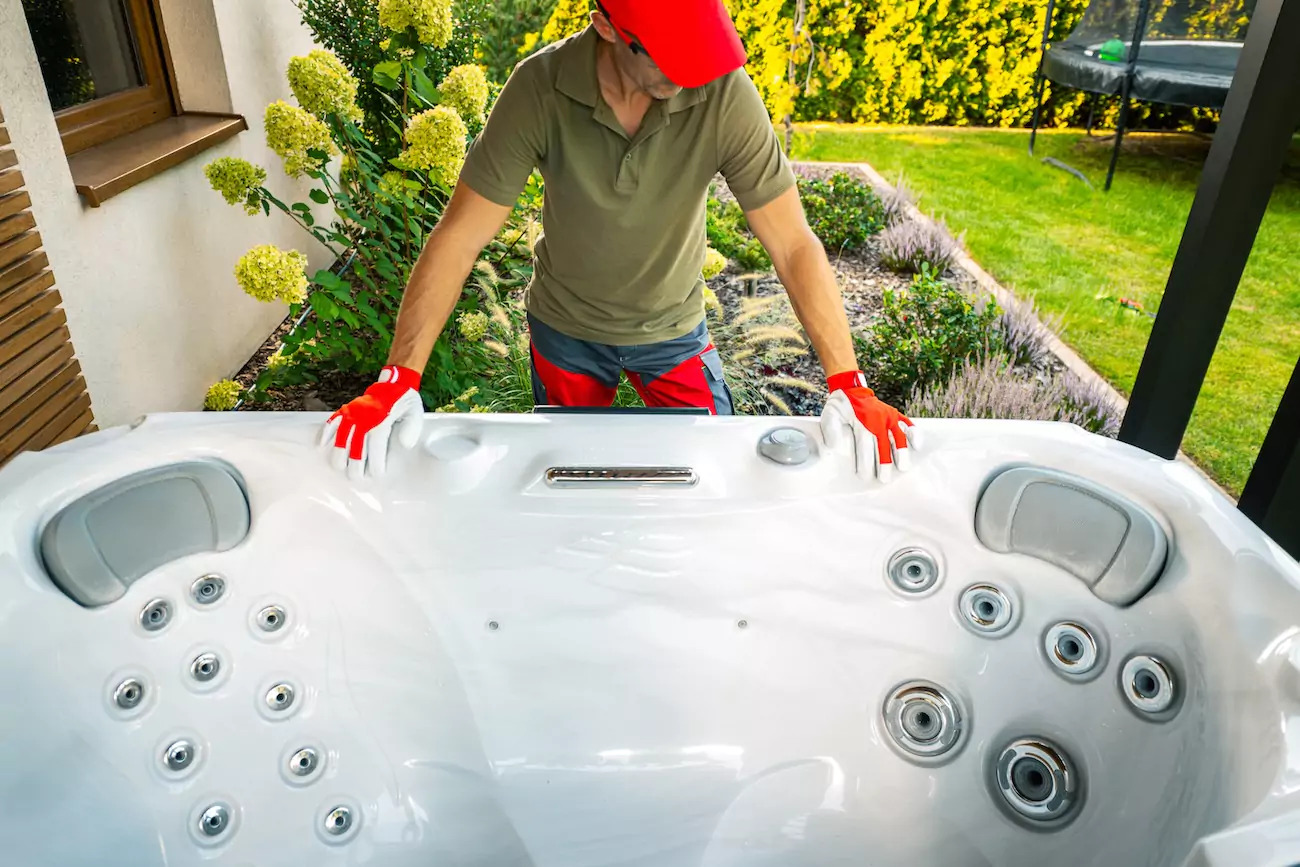Moving a hot tub requires careful planning and proper execution to avoid damage and injury. Many homeowners underestimate the complexity involved in relocating these heavy, bulky items. Working with an expert moving crew in Dallas can make this challenging task significantly more manageable. From assessing the hot tub’s specifications to preparing the new location, several critical steps ensure a successful move. One often overlooked aspect is confirming the new site’s suitability, including adequate space, strong flooring, and access to necessary utilities—factors that can transform even the most carefully planned move into a frustrating experience if neglected.
Assessing the Hot Tub
When moving a hot tub, carefully assess its size and weight to determine the best transportation approach. Hot tubs vary greatly in dimensions, ranging from compact two-person models to larger versions accommodating up to eight people. Understanding your specific hot tub’s measurements is crucial as this dictates the equipment needed for the move, such as appropriate straps, dollies, or cranes.
Evaluating the hot tub’s weight is equally important to ensure your transportation vehicle can safely support it. Heavier units may require a truck with a liftgate for loading and unloading. Knowing the weight also helps determine how many people you’ll need to assist with moving it safely.
Gathering Necessary Tools
To ensure a smooth and efficient hot tub move, gather all necessary tools and equipment beforehand. Having the right tools on hand makes a significant difference in the ease of the moving process. Here’s a list of essential items you’ll need:
- Moving Straps: Invest in high-quality moving straps to securely lift and transport the hot tub without strain.
- Furniture Dolly: A sturdy furniture dolly helps roll the hot tub to its new location smoothly.
- Plywood Sheets: Use plywood sheets to protect floors from scratches and provide a stable base for the hot tub during the move.
- Adjustable Wrench: You may need to disconnect the hot tub from electrical or plumbing connections, so having an adjustable wrench is essential.
- Tape Measure: Measure doorways, hallways, and the hot tub itself to ensure proper fit and plan the best route.
Securing Proper Equipment
Make sure you have all necessary equipment before attempting to relocate the hot tub. Proper equipment is vital for successful transfer. Start with a heavy-duty appliance dolly with straps that can support the hot tub’s weight. The dolly should have large wheels capable of handling rough terrain and stairs. Gather thick moving blankets to protect the hot tub’s surface during transport and provide padding. Have furniture sliders or PVC pipes ready to help move the hot tub across flat surfaces with minimal friction. Recruit several strong individuals to help with the relocation; teamwork is crucial for executing a smooth move. Finally, prepare a toolbox with basic tools like screwdrivers and adjustable wrenches to dismantle any parts necessary for safe transportation.
Draining the Hot Tub
First, disconnect power to the hot tub before beginning the draining process. This step is crucial for safety and to avoid damaging electrical components. To drain the hot tub, locate the drain valve near the bottom of the tub. Attach a garden hose to direct water flow, ensuring the other end is in a suitable drainage area where water can flow freely without causing damage.
Once the hose is securely attached, carefully open the drain valve. Allow water to flow out slowly to prevent excessive splashing or flooding. Depending on your hot tub’s size, complete drainage may take time, so be patient. After emptying, turn off the drain valve and disconnect the hose. Consider cleaning the interior surfaces while empty to ensure freshness in its new location.
Enlisting Help
Before attempting to relocate a hot tub, recruit at least two strong individuals to help with lifting and transportation. Moving a hot tub requires proper planning and execution. Extra hands not only make the process easier but also reduce the risk of injuries and damage.
Choose helpers who are physically capable of lifting heavy objects. Ideally, they should have experience moving bulky items to ensure smooth, efficient work. Communication is crucial during the moving process, so discuss the plan and assign specific roles to each person involved.
A team of helpers allows for better coordination when maneuvering the hot tub through tight spaces or around obstacles. Remember, safety should always be your top priority, and having a reliable team makes the task much more manageable.
Planning the Route
Considering the hot tub’s dimensions and weight, determine the most efficient, obstacle-free path for transportation. Begin by measuring the hot tub’s width, height, and length to ensure it can pass through doorways, gates, and tight spaces along your chosen route. Note any stairs, slopes, or uneven surfaces that may require special attention or equipment. Identify obstacles such as furniture, plants, or other items that may need temporary removal or rearrangement.
Select pathways offering ample space for maneuvering with minimal sharp turns or narrow passages. Clear the chosen path of debris, tripping hazards, or obstacles that could impede movement. Consider factors like overhead clearance and weight capacity of any ramps or elevators you’ll use. Careful advance planning streamlines the process and minimizes risk of accidents or damage.
Safely Lifting and Moving
To safely lift and move a hot tub, use proper lifting techniques and equipment to prevent injury and damage. Ensure you have enough strong individuals positioned evenly around the hot tub to distribute weight. Bend at the knees, keep your back straight, and lift using your legs rather than your back. Use lifting straps or a hot tub dolly for a more secure grip and easier maneuverability.
Clear the path of obstacles and tripping hazards before moving. Communicate clearly with your team to coordinate movements. Transport the hot tub slowly and carefully to prevent sudden shifts that could cause damage. Always prioritize safety over speed, taking breaks when needed to avoid overexertion.
Reinstalling the Hot Tub
Carefully position the hot tub in its designated location, ensuring proper alignment and stability before beginning reinstallation. Proper reinstallation requires attention to detail and a systematic approach. Here are four essential steps:
- Electrical Wiring Check: Verify all electrical connections are secure and in good condition to prevent malfunctions or hazards.
- Plumbing Inspection: Thoroughly examine the plumbing system, including pipes and fittings, to ensure there are no leaks or blockages that could cause water damage.
- Seal Replacement: Replace worn-out seals or gaskets to maintain a watertight seal and prevent leaks.
- Fill and Test: Fill the hot tub with water, then test all components including jets, pumps, and heaters to confirm everything works correctly before use.
Other Related Articles:

